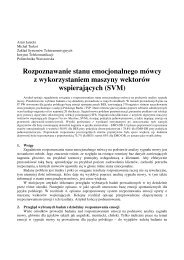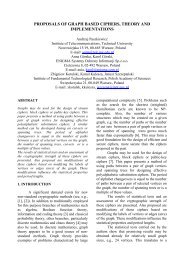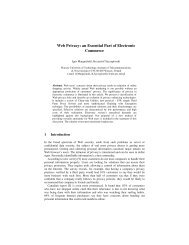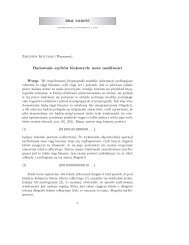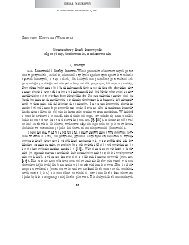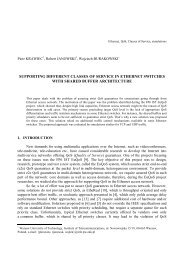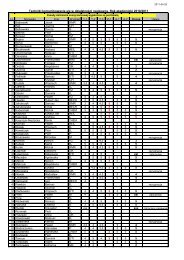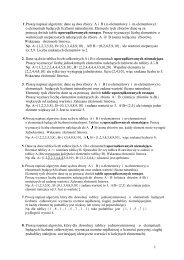MAX II Development Kit Getting Started User Guide
MAX II Development Kit Getting Started User Guide
MAX II Development Kit Getting Started User Guide
You also want an ePaper? Increase the reach of your titles
YUMPU automatically turns print PDFs into web optimized ePapers that Google loves.
<strong>Getting</strong> <strong>Started</strong><br />
V_INT shows the Core V CC rise time, and the rise time variation caused<br />
by POT1. ACTIVE_IO is driven by a <strong>MAX</strong> <strong>II</strong> user I/O pin that helps<br />
demonstrate the instant <strong>MAX</strong> <strong>II</strong> becomes functional (powered-up and<br />
configured).<br />
Figure 2–4 shows a typical digital oscilloscope output. For this test the<br />
V CCINT rise time is 10 ms. The device is functional at 2.18 V, well below the<br />
minimum V CC level of 3.0 V. The I/O Pin starts out low, and at about a<br />
core V CC of 1.25 V the I/O pull-up becomes active and the I/O goes to the<br />
V CCIO level.<br />
1 In the development board setup, the V CCIO ring is on a different<br />
supply than V CCINT . The V CCIO ring is a constant 3.3 V and does<br />
not power cycle when S5 is pressed.<br />
In Figure 2–4, the <strong>MAX</strong> <strong>II</strong> representative I/O (labeled Active I/O on the<br />
test point on the board), switches to 0 V when V CCINT is at 2.18 V. It<br />
switches after configuration is complete and the core registers are reset,<br />
and released and the I/O are released. Once working, this I/O pin will<br />
begin to oscillate with a high and low period equal to T CONFIG , the time<br />
needed to move the configuration data from the Configuration Flash<br />
Memory (CFM) to the configuration SRAM. The first falling edge on this<br />
I/O (shown in the lighter color in Figure 2–4) is when configuration is<br />
complete. Measuring back the T CONFIG of the first low pulse width of this<br />
Active I/O will show at approximately what core voltage configuration<br />
started.<br />
Altera Corporation <strong>Development</strong> <strong>Kit</strong> Version 1.0.0 2–11<br />
October 2004<br />
<strong>MAX</strong> <strong>II</strong> <strong>Development</strong> <strong>Kit</strong> <strong>Getting</strong> <strong>Started</strong> <strong>User</strong> <strong>Guide</strong>




